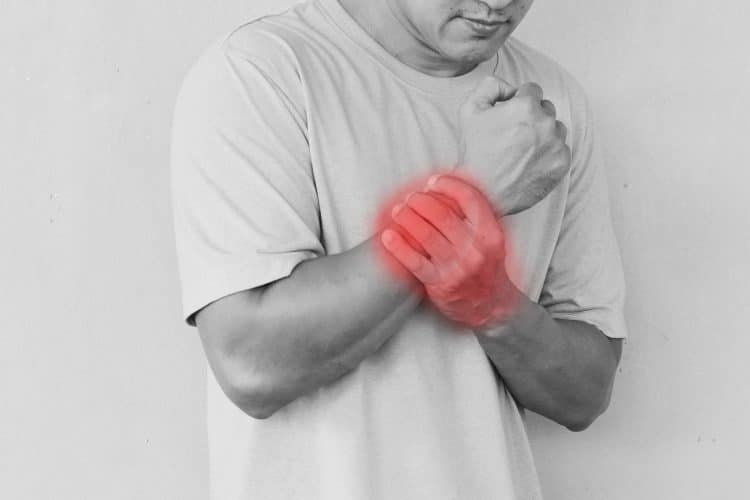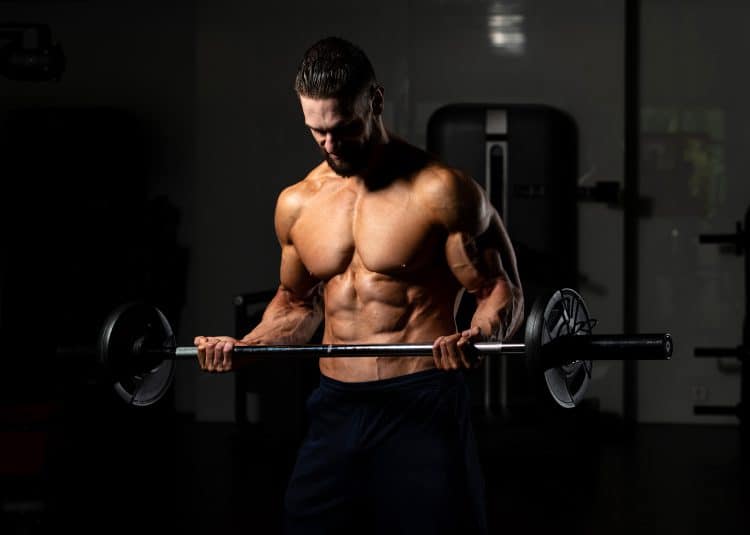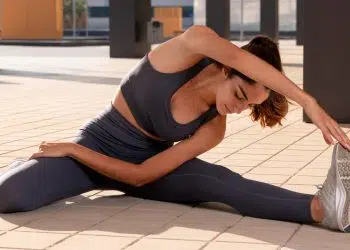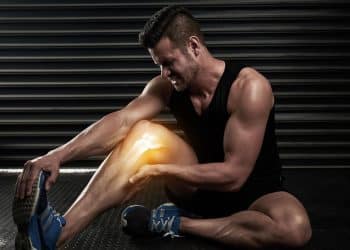No pain, no gain, or so the saying goes. But, there is a big difference between the pain caused by lactic acid and muscle fatigue and the pain that signifies you’re actually hurting yourself.
A lot of lifters experience forearm pain during training. It’s especially common when you do curls with a fully supinated (palms up) grip, i.e., straight barbell curls and straight bar cable curls.
This pain can be mild and temporary or severe and long-lasting. While the former is usually nothing to worry about, the latter may be bad enough to stop you from training.
In this article, we examine the causes of forearm pain while curling and how to fix it.
Possible Causes of Forearm Pain During Biceps Curls
Forearm pain during curls is pretty common, and it’s also usually very treatable, and often avoidable. The most common causes of forearm pain during curls are:
Level Up Your Fitness: Join our 💪 strong community in Fitness Volt Newsletter. Get daily inspiration, expert-backed workouts, nutrition tips, the latest in strength sports, and the support you need to reach your goals. Subscribe for free!
The Pump
The pump is mostly a good thing. When you contract your muscles, blood flow into that area is reduced. Then, when your set ends, and you relax, flow is restored, and blood floods back into the muscles you’ve been training. This causes blood pooling, which makes your muscles expand and swell.
While curls target your biceps, your forearms have to work hard to grip the barbell, triggering a pump in your lower arms. This can sometimes be painful, especially if your workout involves lots of sets of several similar exercises.
Poor Form
Biceps curls are pretty simple, yet many lifters don’t or can’t perform them correctly. Using too much weight and flexing or extending your wrists can take the stress off the biceps and put it on the forearms.
If you are “that guy” who looks like he’s doing an underhand power clean instead of a barbell biceps curl, it’s time to check your ego and lighten the load. Your forearms will thank you!
Also, your wrists should be neutral (straight) during biceps curls and neither flexed nor extended. If you have trouble keeping your wrists straight, again, you probably need to use less weight and may benefit from wearing supportive wrist wraps. While wrist wraps are most commonly used in pressing exercises, they can be helpful during curls, too.
You’re Gripping The Bar Too Hard
Curls are a biceps exercise, but it’s impossible to do them without using your forearms. However, if you grip the bar too tightly, you could end up fatiguing your forearms before your biceps get much of a workout.
If you are a habitual bar crusher, the pain in your forearms could simply be the accumulation of lactic acid, which is a byproduct of intense exercise.
That doesn’t mean you should relax your grip entirely and risk dropping your barbell mid-set. Still, you should pay more attention to the pressure on the bar and reduce your grip slightly to avoid overloading your forearms.
Overuse
Straight bar biceps curls are an awesome muscle-building exercise. That said, you CAN have too much of a good thing.
Doing this exercise too often can result in overuse injuries such as tendonitis, which is the inflammation (reddening and swelling) of the tissues that attach your muscles to your bones.
While tendonitis usually affects the joints (elbows, shoulders, knees), it can affect any muscle insertion, including your forearms.
So, while barbell biceps curls are a great movement, you should not do them all the time. Instead, give your forearms a break by varying your workouts. Make sure you use several different biceps exercises and don’t just rely on straight bar curls when training your arms.
Muscle Strain
Muscles are made up of longitudinal bundles of muscle fibers. Lift too much weight or try to jerk the weight up and you can strain or tear a muscle, causing damage to the fibers. Muscle strains cause swelling, inflammation, and pain, which usually come on pretty instantaneously.
Muscle strains usually affect the agonist or target muscle of the exercise you are doing but can also hit smaller, helper muscles called synergists. Your forearms act as a synergist during curls and could be injured if you try to lift too much weight or lift the weight too fast. Muscle strains can also happen if you are not warmed up or fully recovered from your last workout.
Related: How to Find the Best Forearm Compression Sleeve For Improved Physical Performance.
How to Avoid Forearm Pain When Curling
Does forearm pain bother you during biceps curls? Here are some tried and tested solutions!
Stop Doing Straight Bar Curls
Straight bar curls put your wrists and elbows in a very unforgiving position. And what’s directly between these two joints? It’s your forearms, of course!
So, give your forearms a break by not doing straight bar curls, either with a free-weight barbell or on a cable machine. Instead, make the switch to the following forearm-friendly biceps exercises:
Do Strict Curls to Prevent Cheating
While the occasional cheat rep probably won’t cause too many problems, habitual cheating during biceps curls could be the cause of your forearm pain. So, as mentioned, you need to use less weight so that you don’t need to cheat to get the weight up.
As well as using less weight, you can reduce your ability to cheat by doing strict curls with your back resting against a wall or pillar.
To do this, hold your barbell as usual, but then lean against a wall, so your butt and the back of your shoulders are touching it. Place your feet a few inches out in front of you so you can’t use your legs.
Bend your arms and curl the weight up to your shoulders. With no help from your legs or back, this should be a challenging exercise that you almost entirely feel in your biceps.
With your ability to cheat turned off, you’ll HAVE to use less weight, but you’ll still get a great biceps workout. Use an EZ bar to make this exercise even more forearm-friendly.
Level Up Your Fitness: Join our 💪 strong community in Fitness Volt Newsletter. Get daily inspiration, expert-backed workouts, nutrition tips, the latest in strength sports, and the support you need to reach your goals. Subscribe for free!
Try Using a Different Grip
Do you always do biceps curls with a standard shoulder-width grip? That could be why you have forearm pain. Try using a wider and a narrower grip to a) hit your biceps from some different angles and b) provide your forearms with some variety.
Incidentally, wide-grip curls tend to target your inner biceps, while a wider grip hits your outer biceps. So, instead of doing three sets with a medium grip, why not do one wide, medium, and narrow set of curls to get a better biceps workout AND save your forearms?
Stretch Your Forearms
Muscle tightness is a common cause of forearm pain. Even if you stretch regularly, you probably don’t stretch your lower arms very often, if at all. Strength training workouts involve a lot of gripping, which can cause adaptive shortening so that your hands naturally close when you relax. If this happens to you, you definitely need to stretch your forearms.
There are lots of different forearm stretches, but this is one of the best. But, be warned, it’s also painful, especially if your muscles are tighter than guitar strings!
Complement this stretch with some self-massage. Use your opposite hand to work deep into the tissues of your forearm and elbow to release tension, free up fascia, increase blood flow, and speed up the removal of inflammatory waste products.
Try stretching your forearms between sets of curls and between workouts to prevent forearm pain.
Try Training with Lower Weights and Higher Reps
Heavy weight and low rep training are arguably the best way to build strength, but it can be hard on your joints and connective tissue. However, you can still build muscle mass using light weights and high reps, which is usually more joint and soft-tissue friendly.
So, rather than doing sets of 6-8 for curls, lighten the load and try doing 15-20 reps instead. Rest just 30-60 seconds between sets to train your muscles without overloading your wrists, elbows, or forearms.
You can make high rep, light weight training even more effective by using blood flow restriction straps.
Reduce Your Biceps Training Volume
Even if you put all these tips into action, if you’re doing too much biceps training, forearm pain is almost inevitable. There is only so much punishment your forearms can take before pain is the unavoidable result.
Remember, your forearms are involved in many of the exercises in your workout, and if you compound the problem by doing lots of curls, you’re more likely to cause inflammation and pain.
Give your forearms time to recover by doing fewer curls per workout and training your biceps less frequently – once a week is fine. Remember that your biceps get a great workout when you train your back, so they’re not going to start to atrophy just because you only work them directly once a week.
If your forearms are really bothering you, you may need to take a complete break from curls for a few weeks. However, this is only usually necessary if the pain is particularly debilitating, you’ve had it for a long time, or you’ve used the interventions in this article, but they haven’t worked.
Read more about blood flow restriction (BFR) training here.
Strengthen Your Forearms and Grip
Weak forearms may be more prone to pain than strong forearms. Assuming you don’t have a pre-existing injury, try beefing up your forearms to turn what could be a weak link into a strong one.
Good exercises for increasing forearm strength include:
How to Treat Existing Forearm Pain
If your forearms hurt when you curl, and that pain lasts long after your workout has finished, the following strategies will probably help.
Rest – if the stress of curls is hurting your forearms, you need to remove that stress to allow your forearms to recover and heal. Take a rest not just from curls but from all biceps training. You may also need to take a break from your back workout as things like chin-ups, rows, and pulldowns are also very forearm-centric.
How long should you rest? Start with a week and see how your body responds. That may be enough, or you may need longer, depending on the severity of your aches and pains.
Ice – chronic and acute injuries are usually accompanied by inflammation. Ice can help reduce the redness and swelling that’s causing your pain. Ice itself is also an effective pain killer.
Put some crushed ice cubes in a washcloth or similar and hold it on the painful area for 10-15 minutes several times a day. However, take care not to get an ice burn. Remove the ice for a few seconds every five minutes or so, looking for patches of whiteness that may indicate that the ice is doing more harm than good.
Compression – wrapping the affected area in a compression sleeve or bandage may help reduce forearm pain. The dressing should be snug but not so tight that it reduces blood flow. Elasticated compression bandages are cheap and available in most drugstores.
Elevation – holding your forearm above your heart can help reduce inflammation and speed up the removal of waste products from the area. So, whenever you can, rest your forearm across your chest with your hand on your opposite shoulder. For example, you could do this while watching TV at night.
How To Prevent Forearm Pain When Curling
Forearm pain during curls can be frustrating and debilitating. But, the good news is that it’s usually both preventable and treatable. Use less weight, curl with perfect form, and do fewer straight bar curls to avoid forearm pain in the first place.
Treat existing forearm pain with rest, ice, compression, and elevation if you’ve already got lower arm aches and pains.
While bodybuilding training is often painful, you must know the difference between so-called good pain and bad pain. The pain of lactic acid and fatigue is unavoidable and part and parcel of the workouts that’ll make your muscles grow.
However, the pain of injury is different, and it’s best not to ignore it.
Instead, listen to your body and learn the difference between the pain of a good workout and the pain that indicates that something is wrong!














